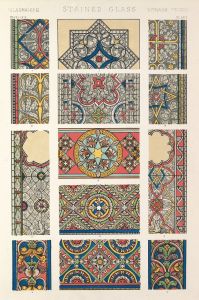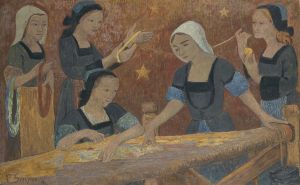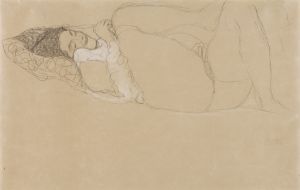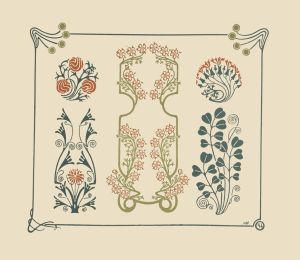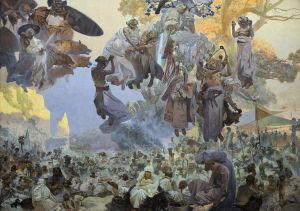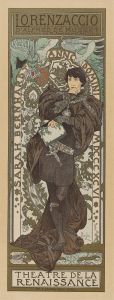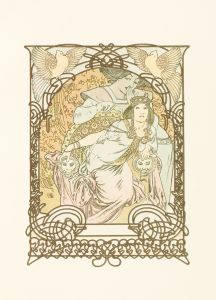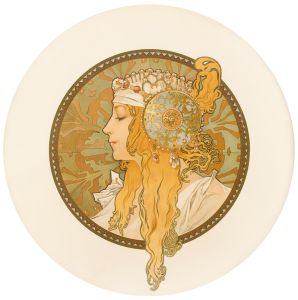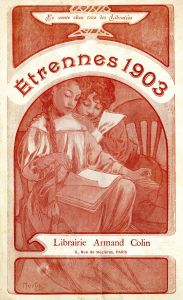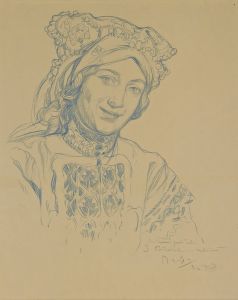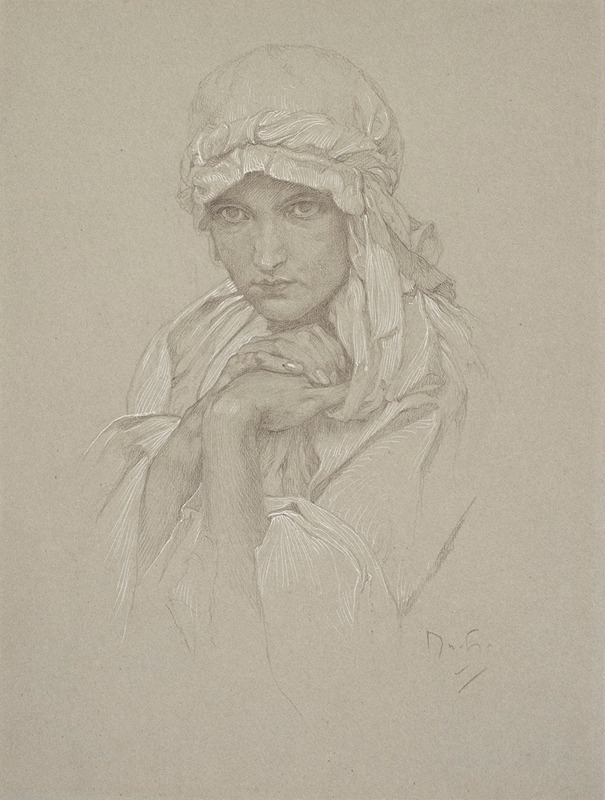
Portrait of the Artist’s Daughter in Slavic Dress
A hand-painted replica of Alphonse Mucha’s masterpiece Portrait of the Artist’s Daughter in Slavic Dress, meticulously crafted by professional artists to capture the true essence of the original. Each piece is created with museum-quality canvas and rare mineral pigments, carefully painted by experienced artists with delicate brushstrokes and rich, layered colors to perfectly recreate the texture of the original artwork. Unlike machine-printed reproductions, this hand-painted version brings the painting to life, infused with the artist’s emotions and skill in every stroke. Whether for personal collection or home decoration, it instantly elevates the artistic atmosphere of any space.
Alphonse Mucha, a renowned Czech painter and decorative artist, is best known for his distinctive style that became synonymous with the Art Nouveau movement. Among his diverse body of work, the painting "Portrait of the Artist’s Daughter in Slavic Dress" stands out as a personal and culturally significant piece. This artwork features Mucha's daughter, Jaroslava, dressed in traditional Slavic attire, reflecting both his personal life and his dedication to Slavic culture.
Alphonse Mucha was born in 1860 in the town of Ivančice, in what is now the Czech Republic. He gained fame in Paris during the late 19th and early 20th centuries, primarily for his posters of actress Sarah Bernhardt, which helped define the Art Nouveau style. Mucha's work is characterized by its intricate lines, elegant compositions, and the use of natural forms, often featuring beautiful women surrounded by flowers and other organic motifs.
The "Portrait of the Artist’s Daughter in Slavic Dress" is a testament to Mucha's deep connection to his Slavic roots. Throughout his career, Mucha was passionate about promoting Slavic culture and identity, which is evident in his later works, particularly the "Slav Epic," a series of 20 monumental canvases depicting the history of the Slavic peoples. This cultural pride is also reflected in the portrait of his daughter, where the traditional dress serves as a symbol of national heritage.
The painting captures Jaroslava Mucha in a serene and contemplative pose, adorned in a richly detailed Slavic costume. The attire is characterized by its vibrant colors and intricate embroidery, typical of traditional Slavic garments. Mucha's attention to detail in the depiction of the fabric and patterns highlights his skill as an artist and his appreciation for cultural authenticity.
Mucha's portrayal of his daughter is both tender and idealized, showcasing his affection for her while also emphasizing the beauty and dignity of Slavic traditions. The use of soft, flowing lines and harmonious colors is typical of Mucha's style, creating a sense of elegance and grace. The background of the painting is often kept simple, allowing the focus to remain on the subject and her attire.
This portrait not only serves as a personal memento for Mucha but also as a broader statement about the importance of cultural identity. By choosing to depict his daughter in Slavic dress, Mucha reinforces the significance of preserving and celebrating one's heritage, a theme that resonates throughout his oeuvre.
While specific details about the creation date and the current location of the painting may not be widely documented, the work remains an important part of Mucha's legacy. It exemplifies his dual commitment to family and cultural heritage, encapsulating the essence of his artistic and personal values.
In summary, "Portrait of the Artist’s Daughter in Slavic Dress" by Alphonse Mucha is a poignant representation of the artist's love for his family and his dedication to Slavic culture. Through this work, Mucha not only captures the likeness of his daughter but also pays homage to the rich traditions of his homeland, making it a significant piece within his body of work.





